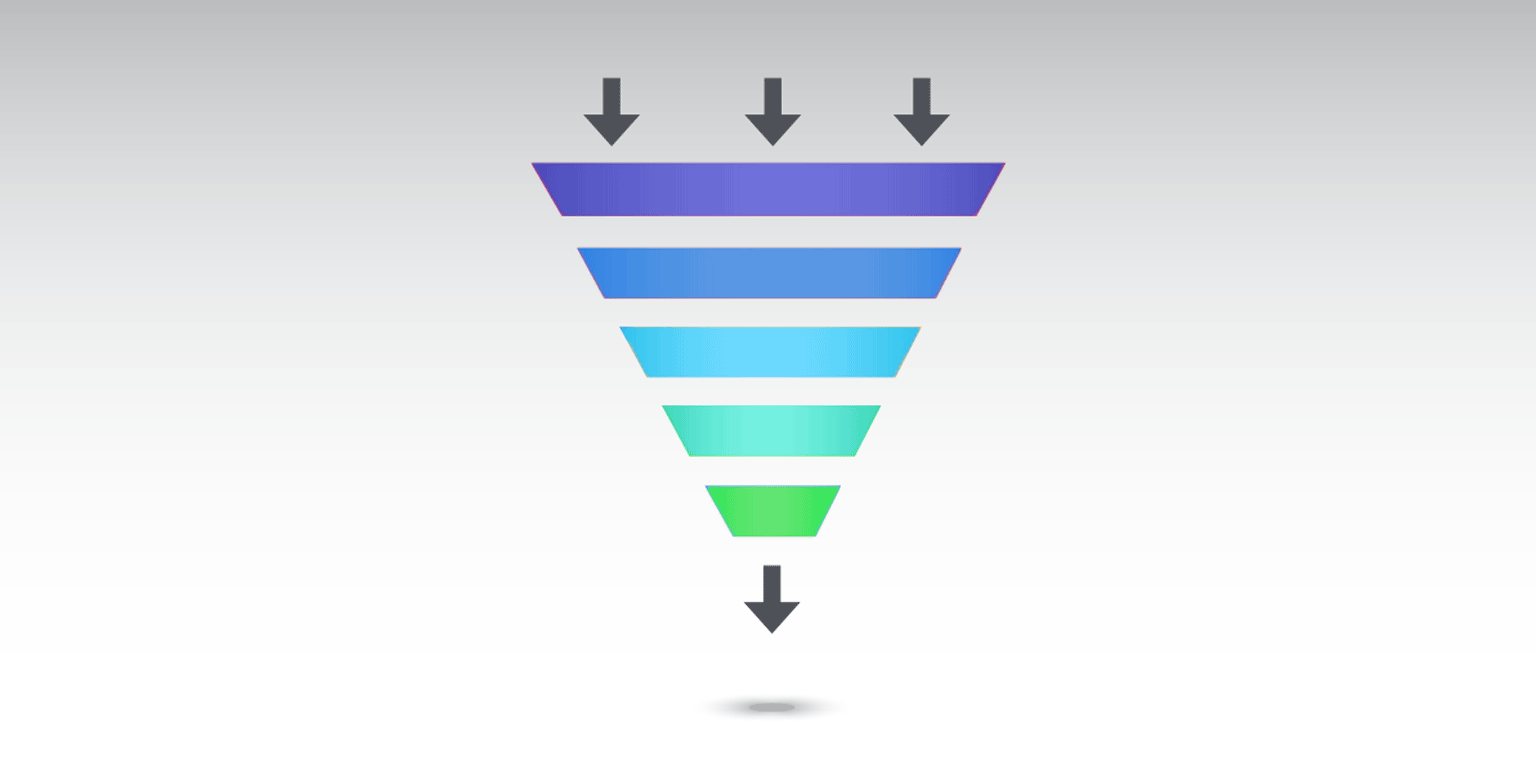It’s no question that we’re facing some pretty challenging times right now. While our first priority here at Clari is to ensure the health and safety of our families, community and employees, continuing to provide our customers with revenue confidence is a close second.
Over the past few weeks, the Clari team has been working extremely closely with our customer community in helping them gain critical visibility into the current state of their pipelines, given the uncertainty in the market.
As every revenue team in the world right now is looking for similar sales pipeline visibility, I thought I’d share a few examples of the insights that are proving invaluable to us internally at Clari and to many of our customers.
Establishing a Baseline: Segment Opportunities By Risk Profile
Each company we’ve talked to is in the process of establishing some level of risk assessment across every single opportunity in their pipeline. Once the risk scale has been designed and deployed, reps and CSMs can start talking to their coaches and champions and to get an accurate assessment for each opportunity. Here is a sample COVID-19 risk scale that you could deploy:
- High Risk: Budget Impacted (Budget is on hold or no longer available)
- High Risk: Project Impacted (Project/evaluation is on hold or no longer being pursued)
- Assumed High Risk: Not Confirmed (High risk industry or business model, but impact is not yet confirmed)
- Low Risk: Confirmed low risk
- Low Risk: Acceleration Potential (Low risk with potential to accelerate the close date as possible backfill for other at risk deals)
These are just a few examples. Everyone will have a different view, but identifying risk profiles and then establishing a field in Salesforce at the opportunity level are the first steps to being able to do some segmented analysis of your business.
With a risk profile established, and the help of AI, now we can start using the past to inform where to focus our energy in the present.
How much of My Pipeline Has Already Been Impacted? (And What Can We Salvage?)
In just a few short weeks, things that were all but certainties can now no longer be counted on. Companies are trying to figure out how much pipeline has already fallen out of this quarter, next quarter, and the year... Because Clari uses a time series database to snapshot every field in your CRM every 15min, we’re able to surface these insights for customers quickly and in real time. Companies that are trying to do this manually are having to invest tremendous resources with little actionable output.
Now that we’ve established a sales pipeline risk profile, I can also begin to monitor movement in our highest risk deals in real time.
What’s happening to those deals? Are the opportunities that we flagged as high risk actually translating into less revenue? In the example below you can see that the answer is yes, that is absolutely the case. We've seen $7 million of high risk deals that have slipped in the past two weeks, $4.4 million of which came from our Committed deals.
Before we write these deals off, we need to drill into each and figure out what’s really happening at the deal level. What changes are occurring within each opportunity? Is it just the close date changing? Has the amount also changed? What are our coaches telling us?
Again, because Clari uses a time series database, I can see when things are changing and, because they are color-coded, can know at a glance which direction they’re changing.
For example here above I can see that my top two slipped deals were pushed back to December for budget delays. Are these going to turn in to Q4 slipped deals now? How often is budget actually released in December? Good chance my reps here are just hoping they can keep the deal alive this fiscal year.
The bottom three deals just look like they were delayed until summer. Likely the companies are just trying to wait this thing out and re-evaluate. The top deal of those 3, Americas DC, also has a 92 CRM score, meaning the AI is telling me that it’s acting very much like a deal we typically win (MEDDPIC solved for, time in stage, category, etc.). This is the one I’d want to dive deeper into and see if we can perhaps salvage it.
As I dive in, a key insight I’m looking for is whether or not the company is still actively engaged with us. As you can see below, Clari’s AI and automation automatically captures sales activity and customer engagement data (emails, meetings, files sent, marketing automation signals, and more) and surfaces it in a way that I can take action on it in real time.
In this case, unfortunately it’s not looking so good for pull forward potential. You can see in light blue that they haven’t responded to a single email since the pandemic began and we haven’t had a meeting with them since early March. Activity level is one of the only data points you can really trust in an uncertain environment like this. This insight is invaluable.
How Much Pipeline Is at Risk?
Once you’ve segmented your deals by risk profile, now you want to break down your pipeline and see how much pipeline risk there is at a glance. In this example, that light green represents my committed deals for the quarter — I can see here that they make up a substantial portion of my most at risk segments. This is not good. I need to dive into each of these deals and do the same level of inspection outlined above.
I can also see that I have one low risk deal that’s currently in commit and worth $830k. That’s a deal that I’d want to dive into right away and see if we can accelerate and really put our weight behind to ensure we take it off the street.
The other thing I can see is that there are 8 deals that still don’t have an assigned value yet, so I’d reach out to my reps and see what’s going on with those. This is a really easy way to understand how your pipeline is shaping up at a glance.
Are High Risk Deals Still Engaging With Us & Are We Putting the Right Focus on the Right Deals?
As mentioned above, one of the most important signals to track on these at risk deals is their engagement levels with our team. Are they responding to us? Are they responding to emails? Are they meeting with us?
In Clari, I can isolate the deals I want to focus on — in this case these are the potentially high risk — and monitor the activity on those deals. Here you can see what activities happened in the last seven days and you can get a sense for which ones are active and not so active. This gives you an excellent lens into the business that you can use to drive your 1:1 coaching meetings.
Since activity data is automatically tracked in Clari, we can also track changes to activity over time. This means we can start using Clari’s AI to tell us if our activity levels are representative of deals that we typically win.This is what you’re seeing below; your team’s activity data with Clari’s AI on top of it. On the X axis is the CRM Score (AI telling us if the deal is acting like a deal in Salesforce that we typically win). On the Y axis is the activity score, which is another AI score that tells us if the amount of activity correlates to deals that we usually win.
That means any deals in this bottom right quadrant are deals that we’ve been treating as if they’re going to close — MEDDPIC solved for, stages and close dates are being updated, etc… — but the activity is no longer representative of a deal that we would typically win.
Right now our customers are hyper focused on this quadrant. They want to ensure that deals they were counting on aren’t slipping away. When I see these 3 committed deals in this quadrant above, those are ones I really want to inspect and see what's going on with them to make sure we’re doing everything we can to keep them engaged.
What Low Risk Deals Can We Accelerate?
Alternatively, I can also segment low risk deals that are set to close next quarter and go through the same exercise. What is the CRM Score (AI) telling me? Is there activity happening in the deal? Are they responding to emails and taking our meetings?
If the CRM is positive and we’re seeing engagement, I’m going to focus on those deals and pressure test if they have acceleration potential.
We all know that in the near term we’re going to have deals slip and we’ll need backfill, so finding deals that we can accelerate or incentivize to do business in the first half of the year instead of the second, is going to be absolutely critical.
In this scenario, I don't have any committed deals out that far, but I've got some best-case deals that look pretty good. Deals in this upper right quadrant are where the CRM data says it's acting like a deal that we typically win and the right activity level is there as well. They're still meeting with us. There’s email velocity. They’re engaging with our content, etc. The activity signals are positive, which means I’m going through a deep deal inspection and figuring out if there are opportunities to accelerate these into the first half.
Which of Our Renewals Have the Most Risk?
For companies with recurring revenue models, net revenue retention is extremely top of mind right now. Being able to do this same level of analysis for your renewal revenue is perhaps even more critical than your net new business. When there will be churn (and there will be), getting ahead of forecasting that churn will be super critical as the executive team looks to modify the operating plan accordingly.
More Questions? We Have Answers.
I’d be happy to answer any additional questions you might have about how Clari can give you more revenue confidence in the midst of unpredictability. Feel free to email me directly (ac@clari.com) or request a demo. Good luck and stay healthy.


